For many wargamers, the great appeal of Bolt Action is the ability to re-fight the great engagements of World War II on the tabletop, using their tactical acumen to change the outcome of battles. I adore this facet of the game, but there is a very different kind of fun to be had… I’m talking, of course, about the cut-and-thrust action of ‘competitive’ gaming, where no ploy is too cunning, and no stone is left unturned in the relentless pursuit of a perfectly optimised army list! You’ll also find all manner of weird and wonderful ahistorical matchups on the tournament scene – perfect for players looking for new challenges on the tabletop.
Getting involved in tournaments is a fantastic way to play against a hugely diverse range of players and army lists, and I’ve made some fast friends during my time as the captain of the Warlord Games Tournament Team. While it can seem a little daunting to make the jump from gentle pick-up games to the more competitive arena, a strong list can give you a much smoother transition. Today, I’ll be talking about the basic theories that have served me well in building my lists.
As I’ve mentioned in a previous article, I’ve amassed something of a horde of Soviets for Combined Arms, and I’m going to use some of that collection to build my new tournament army. For those ‘fans’ of my Tiger II-centric German army (i.e. anyone looking for an easy win -ed.), don’t worry – it’ll still come out at events up and down the country, but I’ve had a hankering for an Allied list for a little while, and this seemed like the perfect opportunity. As I talk through the theory of building a list fit for a champion (or enthusiastic challenger), I’ll use my Soviet list to illustrate.
The first thing to consider is the kind of event you’re going to be attending. A read of the event pack and a quick chat with the Tournament Organiser (TO) will give you a good idea of what sort of competition you’re in for and any special rules that might be in play, so you can plan your list accordingly. My Soviets will be a ‘general purpose’ army that I can use at all sorts of events, so I’ll be making sure I’ve got some ‘spare’ units that I can slot in and out of the list as the situation requires. On the UK tournament circuit, there’s been a (frankly excellent) rise in the number of competitive events requiring armies to be historically themed, and awarding points based on how well themed they are – this presents a fantastic challenge to balance competitive efficiency with historical reality. My Soviets will be based around the storming of the Reichstag during the final battles in Berlin, which means plenty of up-close unpleasantness, but little to no heavy armour or big guns! I would always recommend making sure your army’s theme is something that appeals to you from a hobby perspective, even if it is simply basing your force around a cool unit or really big tank that you have a particular penchant for (like my aforementioned Tiger II) – after all, half the fun is in the building and painting to make it truly your army!
The most common requirement for army building in events is that they be comprised of a single Generic Reinforced Platoon drawn from the relevant ‘Armies of…’ book only, and tend to be 1,000-point events, so that’s how I’ll be building my Soviets – of course, your preferred events may be very different, but the basic theory holds true. I’m a little ‘old-school’ when it comes to actually drawing up an army list, much preferring pencil and paper, but your favourite army building app (such as easyarmy.com) can be a great help to speed up the admin – be prepared to make plenty of revisions! Now that we have our theme and format and we’re all ready to go, let’s dive into the theory.
The guiding principle I work on is that every unit in your army must have a clearly defined role and reason for inclusion. Put very simply, if you ask yourself “why is this in my army” and can’t answer, you probably want to reconsider. The answer may be as simple as “because I need some anti-tank firepower”, but the crucial thing is to know what you want your list to do and how each component works to achieve that aim.
The next thing to consider is what percentage of your points you should spend on units that achieve particular roles. By and large, most units in Bolt Action fall into one or more of three basic categories. These are:
Type One – Anti-Infantry
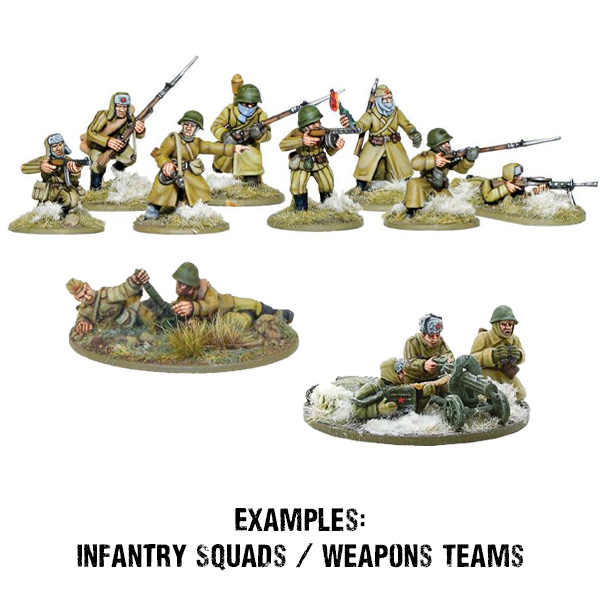
Type Two – Anti-Armour
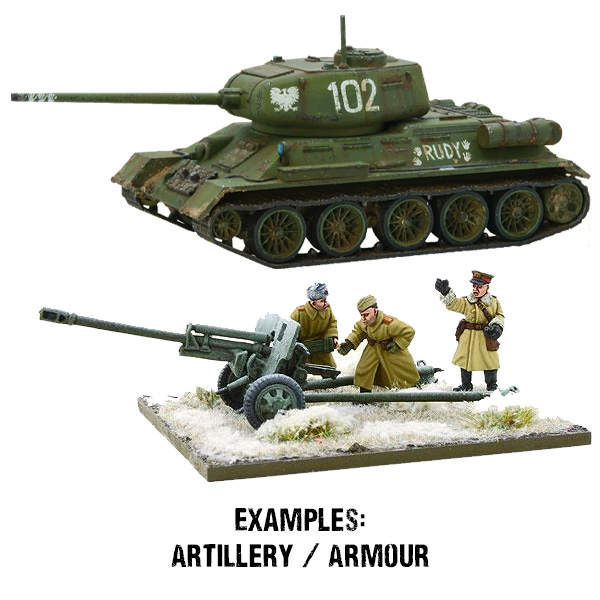
Type Three – Support
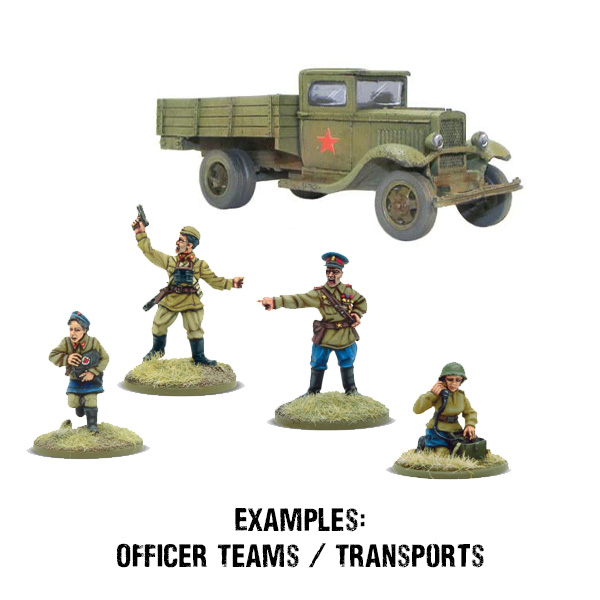
These may seem simple (okay, they are pretty simple!), but they do require a little explanation. Anti-infantry units rather obviously exist first and foremost to destroy enemy infantry. They may be infantry themselves, or weapons teams, or even vehicles, but as Bolt Action is a game of primarily infantry combat, a significant proportion of your force should be made up of Type One units – I recommend at least 60%. They may well have an additional anti-armour function (things such as anti-tank grenades or Panzerfausts), but should not be relied upon to provide all of your anti-armour firepower.
Type Two units are of course mainly designed to take out enemy vehicles. Most of these units will be anti-tank guns or armoured vehicles of your own, but there are a few exceptions. Again, they may well have a secondary anti-infantry capability, but the main reason to include them in your army is dealing with enemy armour. I’d advise about 20-25% of your army be Type Two units.
Finally, we have Type Three units. These perform a variety of supporting roles, and are typically Officer teams, Medics, Forward Observers, transports and tows, and the like. This category also applies, however, to units that are in the army simply to provide extra order dice in the bag! Type Three units tend to be ‘attached’ to other units (for example, a transport vehicle with the squad it’ll be carrying), so I don’t suggest a particular percentage for them – simply take what you need.
With that breakdown complete, the next thing you’ll need to think about is what you want your army to do, as this will inform your unit choices. While your theme will inform what type of army you’re assembling to some extent, Bolt Action offers more than enough flexibility for you to tailor your force to whichever playstyle you prefer. As an example, my Soviets will be all about getting up close and personal with plenty of short-range firepower. As such, I won’t be taking a bunch of LMG squads, which are far better suited to sitting back and shooting! This also extends to the composition of certain units, particularly infantry squads. The keyword here is synergy – simply put, you want to build your units to do a single job well, rather than several jobs merely adequately (or even badly). For example, in a squad that’s expected to get in close, there’s no point spending 20 points on an LMG and 18 points for half a dozen SMGs. The LMG is best used at medium range from a static position, whereas the SMGs want to be as close as possible. Save the points for where they can be useful!
With all that in mind, let’s take a look at my general-purpose Soviet tournament list!
Marcus’ 1,000pt Soviet Tournament List
Armies of the Soviet Union; Generic Reinforced Platoon
| Unit Type | Unit Name | Options | Cost |
|---|---|---|---|
| Infantry (Headquarters) | Regular Junior Lieutenant | Extra Man; SMGs | 60 |
| Infantry (Headquarters) | Commissar | – | 15 |
| Infantry (Squad) | Rifle Squad | 7 Extra Men; Anti-Tank Grenades | – |
| Infantry (Squad) | Regular SMG Squad | 7 Extra Men | 156 |
| Infantry (Squad) | Assault Engineer Squad | 1 Extra Man; Flamethrower; 4 SMGs | 110 |
| Infantry (Squad) | Assault Engineer Squad | 1 Extra Man; Flamethrower; 4 SMGs | 110 |
| Infantry (Squad) | Assault Engineer Squad | 1 Extra Man; Flamethrower; 4 SMGs | 110 |
| Infantry (Squad) | Assault Engineer Squad | 1 Extra Man; Flamethrower; 4 SMGs | 110 |
| Infantry (Team) | Regular Tank Hunters Team | Panzerfaust; SMG | 36 |
| Infantry (Team) | Regular Tank Hunters Team | Panzerfaust | 30 |
| Infantry (Team) | Regular Tank Hunters Team | Panzerfaust | 30 |
| Infantry (Team) | Regular Heavy Mortar Team | Spotter | 75 |
| Infantry (Team) | Regular ZiS-3 | – | 80 |
| Vehicle (Transport) | Regular Truck | – | 39 |
| Vehicle (Transport) | Inexperienced Truck | – | 31 |
998pts, 15 Order Dice
Let me say right off the bat that this isn’t the most optimised list you can make out of the Soviet army book – you’ll note a distinct lack of Katyushas – but it’s an army that can more than hold its own at a competitive event. Tactically, it’s designed to get right up in your opponent’s face with a lot of SMGs and flamethrowers, moving up at speed to contest objectives and limit the opponent’s capability to manoeuvre around the table. The trucks provide options to either Outflank with all four of the Assault Engineer squads or get across the board quickly to get stuck into the enemy, while the large SMG squad is perfect for aggressively removing stubborn enemies from objectives. The free Rifle squad (granted by the Armies of the Soviet Union’s Quantity has a quality all of its own special rule) gives me an ideal unit to sprint onto objectives and claim them late in the game, while my fire support comes from the mortar and ZiS-3. While a touch light on Type 2 units, the flamethrowers give me a significant capability to remove armour, while the Tank Hunter teams allow me to forward deploy a skirmish screen that is difficult to get rid of (as they are Small Teams) and can present a limited anti-tank capability in a pinch. With 15 dice, it won’t be badly outnumbered by the vast majority of armies out there, and avoids the problem that many larger armies have of giving up what I call ‘cheap dice’ – that is, units which are very easy for your opponent to kill.
As a breakdown, let’s look at the percentage split of unit types that I’ve used:
- Type One (Anti-infantry) – 671pts, 67.1% – SMG squad, Assault Engineers, Heavy Mortar
- Type Two (Anti-armour) – 182pts, 18.2% – ZiS-3, Tank Hunter teams
- Type Three (Support) – 145pts, 14.5% – Officer, Commissar, Trucks
I’ve overspent a little on Type One and underspent on Type Two, but that’s because of the very significant secondary anti-armour capability of my Assault Engineers – otherwise I’ve actually managed to follow my own rules! Now that I’ve fully planned it out, it’s time to get cracking with the glue and clippers!
This is the kind of army you can expect to see at tournaments up and down the country – it can be very nasty in the right hands, but it’s reasonably well themed, and certainly not as powerful as it could be – just right for me! I’ll leave the task of making a truly unbeatable army to the reader, but remember – the best army in the world won’t win a single game if the general hasn’t got a clue what they’re doing!
With this primer, you’re all set to put together your own tournament forces. Play hard, play fair, and most importantly – have fun! Good luck, and I’ll see you on the tabletop!
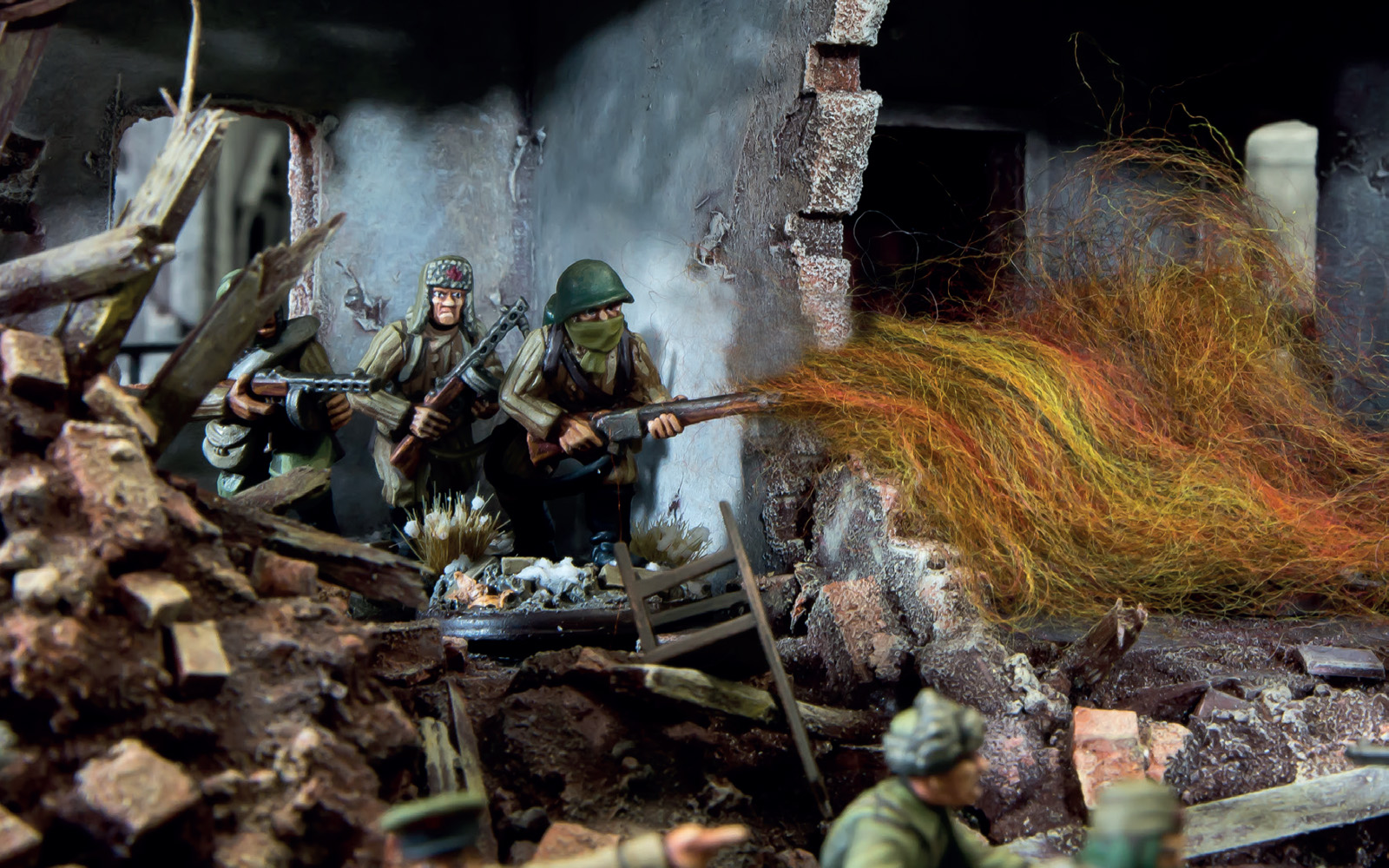

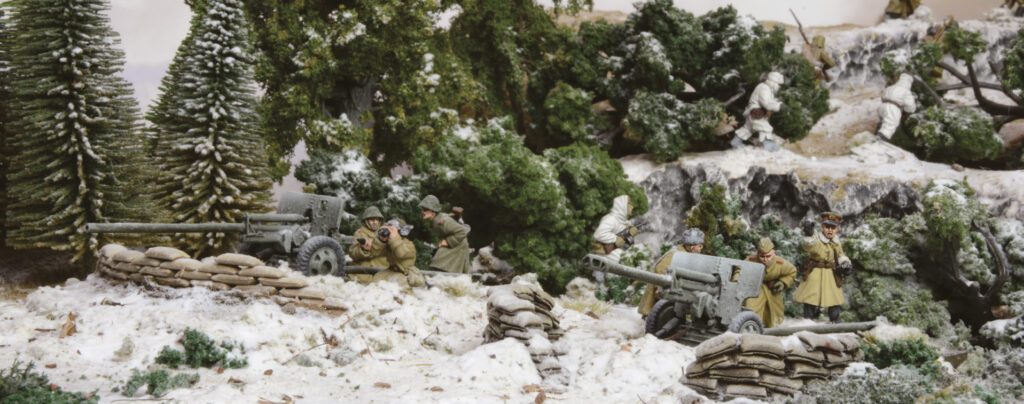
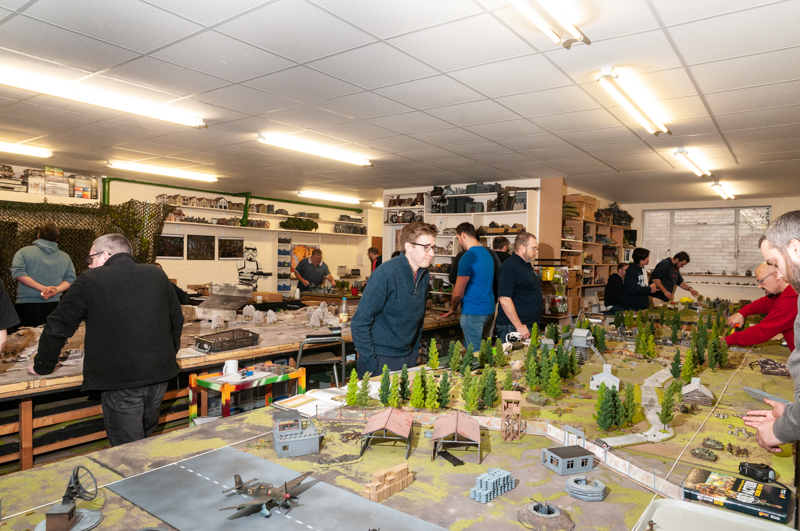
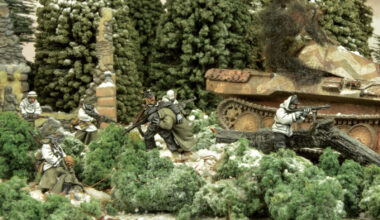
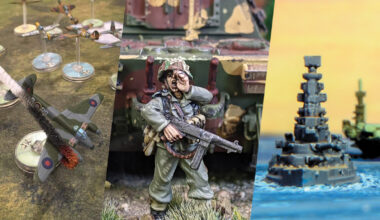
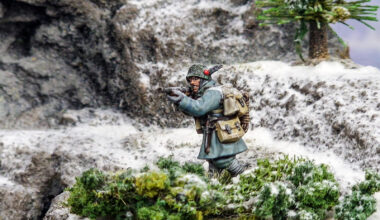
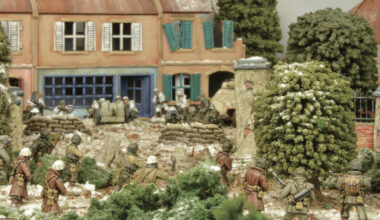
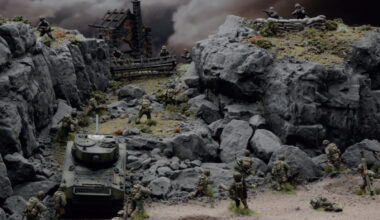
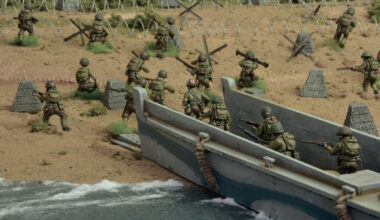
6 comments
You can’t have a commissar in 1945. Really poor start with a school boy error.
I always feel panzerfausts should be a captive weapon [with minus] – but hey it’s in the rules.
What, no gimmick MMGs on your trucks.
I feel you’ve sold yourself for combat in a built up town or bocage. I do like big SMG squads.. Vets though!!
Quite a few scenarios wouldn’t have your tank hunters out in front. Also I notice U have no Vets at all….
The ZIS 3 can probably go as u have a decent amount of AT and very little HE……….. HE wins games.
Soviets can bring HE, so bring it.
A cheeky ‘Bobby’ A/C with a closed in HMG may be worth a call.
He hasn’t stated what time period he is build for, also this is a generic platoon for competitive tournemnt anything goes.
Panzerfausts are hard weapon to hit with, with moved and long range negative modifiers usually always a given.
The assault engineers can only be taken as veteran, so he has vets in his list.
The Zis-3 can fire as a light howitzer or medium AT gun, so he has a HE option.
Only Armoured Car worth taking is the BA-20 with flamethrower, and his list already has enough of those.
What about heavy howitzers, which can remove both infantry and artillery for 125 points?
According to the Soviet army book tank hunters anti tank team is 28 pts (regular) and a panzerfaust is 5 pts. My maths is that the tank hunters teams should be 33 pts not 30 pts.
Also is the first tank hunters team in the list both armed with smgs? If only one is armed with smg then the points cost is correct.
Last point. Why do some of the units not have their level of experience written in the list while some do?
If you add up all the units it comes to 992pts. So you are correct, those squads without an smg should be 33 pts, the 30pts is a type, but they have been counted as 33pts when adding up the total.
The units where he hasn’t put their experience level, is because they only have one option of experience level. Where the other units have multiple options, and has stated once level he has taken for them.